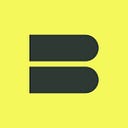The case study on playing cards design and production: a story of colors, functional art, gameplay and a production of cards.
In today's world, where a computer, mobile, and console games are taking over, it is hard to create a physical (board) game that people will love and play. Idea was to create a progressive and very dynamic game, that friends can play together and socialize. The primary target audience was not kids and families, but rather young people that, as we said, help them socialize and enjoy in an internetless environment.
Project
Design, illustration, and production of a playing cards game “NAU”.
Cards
There was a local card game that young people loved to play with regular cards, but everyone had different rules. Idea was to reconstruct that game and make it innovative, set the final rules, but keep that regular cards look and feel. The name of a game itself is created to signify the word “Now”, as not to delay socializing for some other time, but rather to relax and make friends.
To make the brand catchy and memorable, but not too childish, we created a pattern with colors that express the speed and dynamics of the game itself. We used 4 colors (three primary and one secondary): blue, red, yellow and green to symbolize every type of card that we have because people remember easier colors than symbols.
The cards are split into two sections: Neutral and Power cards.
Neutral Cards
The deck consists of 100 cards, where 52 cards are the Neutral cards. As the rules say, neutral cards are thrown on the table, when its players turn, depending on the symbol or color that is already there. The winner is the person who loses all the cards in his/her hand.
As we begin to design from “Power” cards, the regular ones just followed the guidelines that are set. We changed the symbols that normal cards have and used: circle, square, hexagon and triangle, and each symbol had to be in the total number that is on the card. Simple geometric shapes were the best way to approach our target audience.
Power Cards
The deck consists of 48 power cards, where each card has some special effects. Eighter to skip next player, reverse the turn or to allow him to throw more cards from hands, and more.
What makes this game dynamic and fast is that you can throw more cards from your hand if you have an appropriate power card and if you have the exact card in your hand that is on the pile, you can play it, even if it’s not your turn. That makes players stay focused on the game and pay attention to what others can have.
Following the geometric lines, we created these shapes. Jack, Joker, Queen, and King were a bit challenging to handle, but we found our way.
Visual Consistency
The design of cards, packaging, and the rule book has to have a physical communication with the user. The visual consistency is reached with several key elements: logo, colors, illustrations, and typography. From packaging design and cards, to rule book and “Thank you” note, all of them communicate with the users look belonging to one group and grow brand awareness.
Brand Story
Since the game itself is entertaining and engaging for players, we created a pattern that will have a feel of a board game, and to be exciting and playful, but yet not too childish. The pieces itself express motion and resembles “Lego” in a way that can unlock your inner child. The pattern is then used on a card back, packaging, game guide, and even on cards.
We know that there are games like this already, but we give our approach to this and make it more progressive and dynamic than other card games are.
Thank you for reading all the way trough!
Give us a clap if you liked it.
